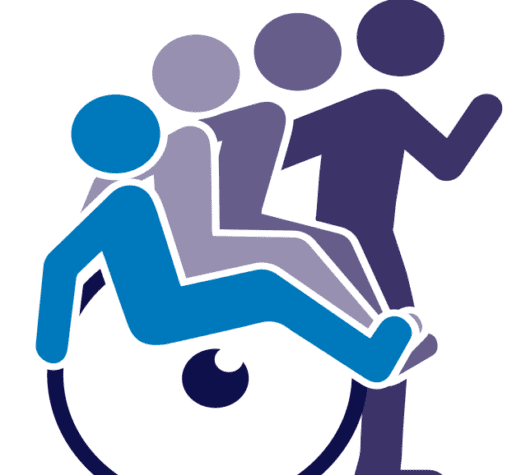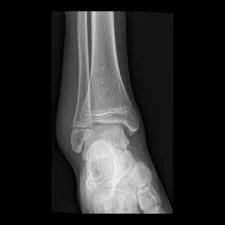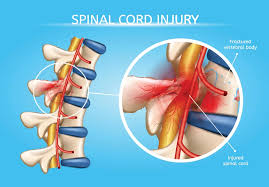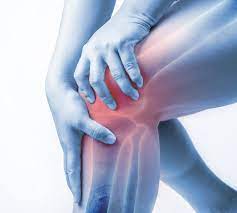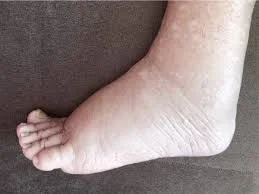Supraspinatus Tendinitis
Supraspinatus tendinitis is a shoulder condition where the supraspinatus tendon becomes inflamed, causing pain, weakness, and difficulty lifting the arm overhead.
Sports injuries, overuse, and repeated movements are common causes of the condition. The severity of the symptoms varies. Painkillers, rest, and ice are noninvasive ways to begin treatment. More severe cases may require surgery.
Table of Contents
What is Supraspinatus Tendinitis?
- An inflammation that affects a part of your shoulder joint is called tendinitis. A set of muscles known as the rotator cuff and the supraspinatus tendon stabilize your shoulder joint.
- These tendons and muscles maintain the humerus, the upper arm bone, in the glenoid, or shoulder socket.
- Inflammation can trap or compress your shoulder’s muscles and tendons against the acromion, the upper bone, resulting in tendinitis.
- The condition known as rotator cuff tendonitis occurs when your rotator cuff tendons become irritated and inflamed. It is known as supraspinatus tendonitis, when your supraspinatus tendon gets irritated and inflamed.
Causes Of Supraspinatus Tendinitis
A few of the many causes for supraspinatus tendonitis are as follows:
- Repeated overhead activities, like painting, swimming, and tennis.
- Shoulder injuries or acute injury.
- Age-related degenerative changes.
- Ineffective biomechanics or posture.
- Impingement syndrome is a condition in which the tendon is pinched by surrounding tissues.
Symptoms Of Supraspinatus Tendinitis
Although the severity of supraspinatus tendinitis symptoms might vary, they usually include:
- Pain, particularly while lifting the arm, along the upper and outer sides of the shoulder.
- Pain that gets worse while you’re doing overhead activities or at night.
- Shoulder weakness.
- Reduced mobility.
- A sensation of shoulder stiffness.
- Pain that might go to the elbow from the arm.
- Inability to get into a comfortable sleeping position due to shoulder pain.
- Tenderness to touch over the affected tendon, which is frequently felt at the front or side.
- The shoulder joint may be swollen.
- A clicking, popping, or catching sensation in the shoulder when moving might be a sign of inflammation or tendon impingement.
- Difficulty carrying out daily duties, including reaching for items on high shelves, combing hair, and putting on clothes.
Risk Factor For Supraspinatus Tendinitis
Your chance of developing shoulder tendonitis increases as we age because our tendons gradually lose some of their flexibility. Other risk factors consist of:
- Involvement in sports like baseball, swimming, or tennis requires repeated actions.
- Having jobs like roofers, painters, or movers that demand reaching overhead or repeated motions.
- Cleaning, raking, and shoveling, among other home tasks.
- Having a medical ailment, such as arthritis, that strains your tendons.
- Failing to stretch before engaging in physical activity.
Diagnosis
In order to confirm any signs of tendon inflammation and rule out other possible causes of shoulder pain, supraspinatus tendinitis is diagnosed using a combination of clinical examination and imaging techniques. These are the several diagnostic methods that are used:
Clinical Examination: A thorough assessment of the shoulder that looks for indications of soreness or swelling as well as pain, strength, and range of motion.
Special Tests:
1. Neer Impingement Test: This test involves stabilizing the scapula while raising the arm 180 degrees forward. Pain indicates impingement.
2. Hawkins-Kennedy Test: The arm is forced internally rotated after being flexed to 90 degrees. Possible supraspinatus tendonitis is indicated by pain.
3. The empty can test, often known as Joe’s test, involves abducting the arm to 90 degrees, then bending it forward by 30 degrees and internally rotating it such that the thumb points downward. The patient opposes pressure from below. Weakness or pain may indicate supraspinatus tendonitis.
4. The Painful Arc Test: Shoulder abduction pain between 60 and 120 degrees.
An X-ray
It can help rule out other possible reasons for shoulder pain, such as arthritis or fractures. It can assist in identifying calcific deposits within the tendon.
Ultrasound
Ultrasound gives real-time pictures of the supraspinatus tendon and other soft tissues. Tendon pain, tears, and fluid buildup can be detected with its assistance.
Magnetic resonance imaging (MRI):
The soft tissues of the shoulder may be seen in great detail using magnetic resonance imaging (MRI). It assists in detecting partial or full-thickness rips, inflammation of the tendons, and any related impingement or bursitis.
Computed Tomography (CT) scan
Although less frequently utilized, CT scans can be useful in some situations by giving precise pictures of the calcifications and bone structures.
Arthrogram
Before undergoing an MRI or X-ray, an arthrogram entails injecting a contrast agent into the shoulder joint. It facilitates the visualization of anomalies in joints or rips in tendons.
Blood Tests
Although the blood test is typically not used to diagnose supraspinatus tendonitis, it may be prescribed to rule out other illnesses, including infections or inflammatory disorders of the system. Combining these diagnostic methods makes it easier to correctly identify supraspinatus tendonitis and provide a customized treatment strategy for each patient.
Treatment
Your age, the severity of your illness, and your symptoms will all affect how you manage shoulder tendonitis. For recent or serious injuries, your healthcare professional could suggest a mix of rest, bandages, and cold packs. Other possibilities for nonsurgical therapy include:
Aspirin, naproxen, or ibuprofen are examples of nonsteroidal anti-inflammatory medicines (NSAIDs), which are used to lessen pain and swelling.
Corticosteroid injection:
If your shoulder pain is severe and persistent, you may be eligible for a cortisone injection.
Platelet-rich plasma (PRP) therapy:
With platelet-rich plasma (PRP) therapy, a medical professional injects concentrated platelet samples to aid healing and recovery.
Physical therapy
A physical therapist may be suggested by your healthcare physician. You can benefit from strengthening and range-of-motion exercises from a physical therapist.
If you have a partly or fully torn rotator cuff or biceps tendon and other therapies don’t help, your doctor can suggest surgery. In addition to treating the injured tendon or tendons, surgery also eliminates inflammatory bursae that may be causing shoulder pain.
Surgical Treatment For Supraspinatus Tendinitis
Surgery may be considered as an option for supraspinatus tendonitis if conservative measures are ineffective. Various surgical procedures are available based on the precise underlying concerns and the severity of the disease. For supraspinatus tendinitis, the following surgical techniques are often used:
Arthroscopic Debridement
This minimally invasive procedure involves inserting a camera (arthroscope) and tiny equipment into the shoulder joint to remove inflammatory or injured tissue, including loose pieces and swollen bursa.
Acromioplasty, or subacromial decompression
It is the process of removing a tiny section of the acromion bone to make additional space for the supraspinatus tendon. This reduces impingement and increases the tendon’s range of motion.
Rotator Cuff Repair
Rotator cuff repair is the procedure of mending rips in the supraspinatus tendon, which may entail securing the tendon to the bone using sutures or anchors or putting the torn ends back together.
Bursectomy
The inflammatory subacromial bursa, a fluid-filled sac that lessens friction between the tendon and bone, is removed during a bursectomy.
Tendon Transfer
A tendon transfer may be necessary if the supraspinatus tendon is seriously injured and damaged. This involves replacing the function of the injured supraspinatus tendon with a neighboring tendon.
Shoulder Replacement (Arthroplasty)
Shoulder replacement surgery may be considered in extreme situations with significant shoulder arthritis and rotator cuff tears. This involves replacing the damaged shoulder joint with artificial components.
Physiotherapy For Supraspinatus Tendinitis
- Rest
- Cryotherapy
- Transcutaneous Electrical Nerve Stimulation (TENS)
- Ultrasound Therapy
- Interferential Current Therapy (IFC)
Exercises For Supraspinatus Tendinitis
As shown below, a number of activities can help reduce symptoms and stop more injuries:
- Pendulums
- Cross-Body Arm Stretch
- Scapular Squeezes
- Arm Circles
- External and Internal Rotation Stretches
- Quadruped Shoulder Flexion Stretch
- Shoulder Rolls and Shrugs
- Neck Stretch
Pendulums
The wounded arm should rest lightly on the ground while you bend forward at the waist. Make light circular motions with your body momentum (not the shoulder itself) and move the arm in a tiny clockwise circle ten times. Circles are formed in a range of sizes, and once finished, they may be rotated counterclockwise.
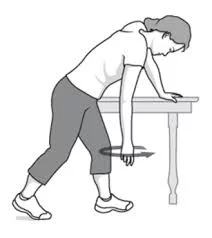
Cross-Body Arm Stretch
Place one arm over your chest. For ten seconds, connect the extended arm with the other arm and keep it there. You should feel a stretch on the back of your shoulder.

Scapular Squeezes
For ten seconds, squeeze your shoulder blades together. Repeat ten to fifteen times.
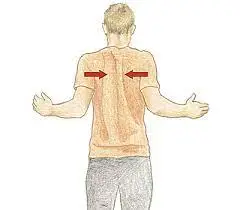
Arm Circles
Extend your arms from your sides at a 90-degree angle. Arms are moved in tiny circles in a clockwise direction for ten seconds, then counterclockwise. To get as much resistance as possible, you can choose between circles of various sizes.
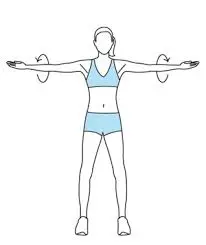
External and Internal Rotation Stretches:
External: Place your elbow and shoulder at a 90-degree angle and place your hand firmly on the wall while standing in the doorway. To feel the front of the shoulder extend, turn the body away from the injured shoulder.
Internal: Take a tall stance and grasp a dowel rod behind your back with both hands, palms out. The rod should be pushed down. You should feel the strain on the front of your shoulder.
Quadruped Shoulder Flexion Stretch
Maintaining a straight back, raise one arm off the floor and thrust it forward while on all fours. The arm should remain parallel to the floor. Place the hand on the floor and switch arms.
Shoulder Rolls and Shrugs
Give yourself a slow shoulder shrug. Lower them gradually after holding at the top.
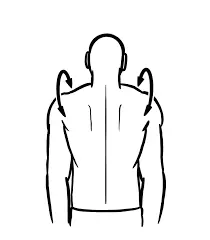
Neck Stretch
Press lightly on the top of your head and tilt your neck to one side to get the most out of the stretch. Switch sides.
Supraspinatus Tendinitis Video
Prevention
The best therapy for shoulder tendonitis is prevention because overuse is the main cause of most instances. Avoiding or changing the problematic activities is important. Underlying issues, such as bad posture or poor technique in sports or the workplace, must be corrected.
Use these fundamental guidelines when engaging in activities:
- Increase your degree of exercise gradually after starting off slowly.
- Limit your repetitions and your effort.
- If there is extraordinary pain, stop.
Summary
When you can’t play a sport you enjoy because of tendinitis in your shoulder, it may be very frustrating. Resting your shoulder for a few weeks will help your tendon repair. Although this might be difficult, it’s crucial to wait for your healthcare provider’s approval before starting again. Avoid taking the risk of getting hurt again. If you do what your doctor instructs, you’ll be back to work quickly.
FAQ’s
It is possible to mistake tendinitis for a muscular strain. A muscular strain causes pain in the muscle itself, whereas tendinitis causes pain close to the point where the muscle joins the bone. This is how the two conditions may be distinguished from one another. Avoid falling into the “no pain, no gain” myth when it comes to exercising.
Pain, soreness, stiffness, and a little swelling at the afflicted tendon’s location are the four main signs of tendonitis. Additional symptoms may include redness, a popping or clicking sound, and a loss of strength or movement in the affected joint or limb.
Raising Weights Over Your Head. At first, those with shoulder problems should avoid workouts that include pushing or overhead motions. Forget about ball-throwing exercises and gym-specific weight training like pull-downs and overhead presses.
The goal of treating supraspinatus tendonitis is to decrease pain and inflammation, then move on to physical therapy and strengthening activities. OTC NSAIDs (such as ibuprofen), rest, ice, and perhaps a shoulder sling are the first measures. In physical therapy, rotator cuff strengthening exercises are used after mild stretches to increase stability. Corticosteroid injections may be used to treat chronic pain, and operations like subacromial decompression or arthroscopic debridement may be necessary in extreme circumstances.
References:
- Null. (n.d.-c). What is supraspinatus tendinitis? Symptoms, causes, diagnosis & physiotherapy treatment of supraspinatus tendinitis | CB Physiotherapy – CB Physiotherapy. Cbphysiotherapy. https://cbphysiotherapy.in/condition/supraspinatus-tendinitis
- Shoulder tendonitis. (2025b, June 2). Cleveland Clinic. https://my.clevelandclinic.org/health/diseases/shoulder-tendonitis
- Dr.Dropin | Supraspinatus tendonitis | Symptoms & treatment. (n.d.-b). Dr.Dropin. https://www.drdropin.no/en/physical/diagnosis/shoulder/supraspinatustendonitis
- Alexanderortho. (2024, April 19). 8 exercises for shoulder tendonitis. Alexander Orthopaedics. https://alexanderorthopaedics.com/blog/exercises-for-shoulder-tendonitis/
